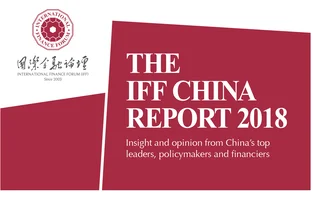
Stage management – The long-term goals of China’s reform and ‘opening‑up’
Planned, goal-oriented development inspires China’s population to look at the big picture and work together towards prosperity and power, writes Chen Bingcai, professor at the Chinese Academy of Governance


China’s long-term national goal
At the 19th National Congress of the Communist Party of China (CPC), President Xi Jinping set the target of building a moderately well-off society in all aspects by 2020. In the next stage – between 2020 and 2035 – he said that China will “realise socialist modernisation”, and from 2035 to the middle of the century, China will develop into “a prosperous, powerful, democratic, harmonious and beautiful socialist modern country”.
Formulating the national strategic goal for long-term development is an important spur to the CPC’s governing the country and development of the economy, and has been an important practical factor in China’s continuing success since reform began.
Strategic objectives for long-term development

China’s strategic goal of long-term development has often been modified in reaction to changes in the international or domestic situation. At its founding, the CPC drew up a Constitution that worked towards the grand ideal of communism, seeking welfare for the population and national rejuvenation. During the Chinese Civil War, the goal of the CPC was to liberate China and establish a new socialist democracy under a ‘people’s democratic dictatorship’. Soon after the founding of communist China, the CPC proposed the objective of building a socialist power with modern agriculture, industry, national defence, and science and technology.
In 1984, paramount leader Deng Xiaoping proposed that increasing China’s per capita income to US$800 by the end of the 20th century would make living standards ‘comfortable’. But now China is striving to enter the higher echelon of developed countries within the next 30 to 50 years. In 1997, the 15th CPC National Congress announced two centenary goals: achieving a moderately prosperous society in all aspects by 2021, the 100th anniversary of the CPC; and building a socialist modern country that is prosperous, democratic, culturally advanced and harmonious by 2049, when the People’s Republic of China celebrates its 100th anniversary.
The 19th CPC National Congress, in proposing its two-stage national development plan from 2020 to 2050, also enriched the implication of the two centenary goals by adding “beautiful” to the original text and replacing the term “modern country” with “modern and powerful country”.
Since reform and ‘opening‑up’, the CPC still advocates grand ideals and long-term goals, giving China a firm and unwavering direction of governance and the development of the economy. In this way, political leaders are well positioned to remain true to the CPC’s original aspirations and keep their mission firmly in mind.
Implementing long-term strategic goals
Formulating national long-term development goals is of important historical value and beneficial to development for the following reasons:
1. Setting long-term goals will help grasp future trends and guide future development. Establishing a long-term goal early in the process furthers its development later on, and supporting systems and policies serve to stabilise institutional designs and policy formulation. Long-term goals are also an essential basis for system design and policy formulation and adjustment. In accordance with achieving a moderately prosperous society and increasing the gross national product (GNP), system design and policy formulation aim to build a market economy through reform and opening‑up. The policies of ministries, industries and local governments should also consider the long-term goal during the process of policymaking. System design and policymaking in powerful capitalist countries always prioritise private ownership, maximum profit, the free market economy and openness, while giving less consideration to social equity. In China, however, system design and policymaking are rooted in the long-term goals of taking care of the interests of all sectors of society. For example, China’s reform began in rural areas, as a response to low-income, mobilised individuals’ initiative for a better harvest – clearly an issue of paramount concern in terms of human survival and the stability of Chinese society.
If China is to build a moderately well-off society by 2020, it must address poverty through a detailed policy of poverty elimination and alleviation that will maintain the long-term stability of the country. System design and policymaking in other nations serve different goals and operate within different institutional frameworks, so resorting to conventional Western economic theories to analyse China’s economy and its trends, or even judging China’s economic trends based on private ownership and free market economic systems, is likely to draw unrealistic conclusions.
2. Long-term goals serve to achieve public consensus and ensure that all of society works towards shared objectives and in concert. China is a large country with many significant variations in landscape, culture and practices between different provinces and cities. This presents governance challenges. A long-term goal is helpful in clarifying solutions to current social contradictions and problems resting on development; there is a need to look at the big picture, rather than just tinkering with regional benefit distribution and structure adjustments. In the first stage of reform and opening‑up, China teetered on the brink of collapse, with division, poverty and regression rife because of a lack of consensus on national development. In the aftermath of this crisis, a long-term goal was formulated that linked the interests of individuals and enterprises to the country as a whole. In this way, local governments, enterprises and individuals were mobilised to jointly develop the economy. As a result, China achieved a stronger economy, improved livelihoods for its population and greater competitiveness.
Moreover, during the process of reform and opening‑up, China was challenged by conflicts of interest between stakeholders and social unrest. The solution to these struggles was to focus on the goal – unswervingly safeguarding political and social stability while continuing reform and opening-up by focusing on boosting the economy. These tactics remain in place today.
In the process of opening‑up, China faced criticism from the international community, including objections to its political and economic system and its social values. China has always adhered to established objectives, systems and policies, and remains committed to the CPC’s leadership, socialism with Chinese characteristics, reform and opening‑up, and the continuous improvement of social welfare provisions such as pensions, medical care and public services so that people can share the fruits of development and enjoy a sense of benefit and happiness. The experience of the past 40 years of reform and opening‑up has proved that China’s political system works, through a wide range of channels rather than a single route. The key lies in looking for a political and economic system and policies that comply with China’s historical, cultural, national and social context.
3. Safeguarding the long-term goal through a phased, step-by-step approach. Long-term goals require patience – they must be implemented in stages with specific agendas, time-
tables and adjustment tables on institutional and policy design. To ensure the effective implementation of long-term goals, the Chinese government has formulated Five- and 10-Year Plans for development. Ministries, local governments and enterprises will follow suit and introduce projects, companies, funding arrangements and policy designs. Annual plans, action measures and policies will be carried out in addition to the Five‑Year Plan – since the period of reform and opening‑up in 1978, China has implemented eight Five-Year Plans and almost 40 annual plans.
To all intents, the long-term goal set by the Chinese government has been achieved. Deng’s desire was realised early in 1997, and the economic indicators of each Five-Year Plan have also been reached ahead of schedule. Compared with 1997, the Chinese economy of 2017 underwent tremendous changes, with its competitiveness rising, along with its position in the international community and its population’s living standards – GNP per capita has reached US$8,000. Previously, the Chinese may have worshipped the products of developed countries, but today Chinese exports flood into foreign countries.
Establishing objectives has been crucial to the success of the Chinese economy – at ministry and local government level – as has the co-ordinated staging of a concrete plan of objective-led actions. Success has also come as a result of the formulation of long-term goals and the far-reaching and all-round thinking and arguments around combining the deficiencies of Chinese long-term development with the wisdom of domestic and foreign experts and personnel from different divisions.
Establishing objectives has been crucial to the success of the Chinese economy – at ministry and local government level
Over the past 40 years of reform and opening‑up, China has developed into a prosperous country. In the next 30 years or so, China must build itself into a great power with strong, comprehensive capabilities. This requires a more comprehensive system of policy design and adjustments. In an era spanning independence to prosperity, the policy is, as Deng said, to let some become wealthy first, then achieve common prosperity with an emphasis on rapid growth, active participation and advancing economic globalisation. In the years ahead, as China becomes stronger, it aims to achieve prosperity for all. Economic development should translate from high-speed growth to high-quality development, with an emphasis on the population’s demand for a better life and the building of a shared community – a community with a shared vision for the future of mankind. Once the long-term goal and requirements are calibrated, the specific system and policy design will also need to be changed. China, therefore, will continue to implement reform and opening‑up and introduce systems and policies to meet the needs of future development.
In conclusion, the success of China’s reform and opening‑up over the past 40 years can be attributed to the establishment of long-term goals, including annual plans and the Five-Year Plans for development, as well as the systems and policies that serve the goal.
Only users who have a paid subscription or are part of a corporate subscription are able to print or copy content.
To access these options, along with all other subscription benefits, please contact info@centralbanking.com or view our subscription options here: subscriptions.centralbanking.com/subscribe
You are currently unable to print this content. Please contact info@centralbanking.com to find out more.
You are currently unable to copy this content. Please contact info@centralbanking.com to find out more.
Copyright Infopro Digital Limited. All rights reserved.
As outlined in our terms and conditions, https://www.infopro-digital.com/terms-and-conditions/subscriptions/ (point 2.4), printing is limited to a single copy.
If you would like to purchase additional rights please email info@centralbanking.com test test test
Copyright Infopro Digital Limited. All rights reserved.
You may share this content using our article tools. As outlined in our terms and conditions, https://www.infopro-digital.com/terms-and-conditions/subscriptions/ (clause 2.4), an Authorised User may only make one copy of the materials for their own personal use. You must also comply with the restrictions in clause 2.5.
If you would like to purchase additional rights please email info@centralbanking.com test test test







